Welcome to our free classical music site

Do you write about classical music? Are you a blogger? Want to team up with Classical Connect? Send us a message, let's talk!

Do you write about classical music? Are you a blogger? Want to team up with Classical Connect? Send us a message, let's talk!
March 19, 2012. Johann Sebastian Bach. The great German composer was born on March 21, 1685. Bach’s musical output was enormous, but for him composing was work: practically all his life Bach wrote music to order. While at Köthen, where Bach was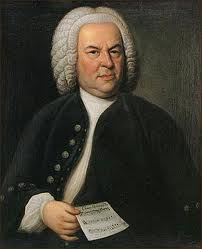 hired as Kapellmeister, he composed for the orchestra at the court of Prince Leopold. And when later on he was appointed the Cantor (music director) of the Thomasschule, part of his job was to compose music for Sunday services at major churches of Leipzig, Thomaskirche and Nikolaikirche. All the while his main task was to instruct student in singing. So it comes as no surprise that Bach recycled a lot of material from one composition to another (to reuse your own or even someone else compositions was quite acceptable in the 18th century: Italian composers did it quite often, and Bach himself transcribed Alessandro Marcello’s oboe concerto to harpsichord and used a number of pieces from Vivaldi’s L'estro Armonico). What is really interesting is how organically Bach’s music could be rearranged from one instrument (or set of instruments) to another. A great example of such transformation is his harpsichord concertos. These concertos were written while Bach was director of the Collegium musicum in Leipzig in 1730s, but scholars believe that most of these concertos are Bach’s own arrangements of violin concertos written inKöthen some years earlier. The famous Concerto no. 1 (who hasn’t heard Glenn Gould’s stupendous recordings of this piece on a contemporary Steinway piano?) was most likely based on a now lost D minor violin concerto. The harpsichord concerto in turn was later arranged by Bach as an organ concerto and was used in two of his Cantatas, the first movement of Wir müssen durch viel Trübsal (We must pass through great sadness), BWV 146, and the last movement (Sinfonia) of cantata Ich habe meine Zuversicht, (I have my confidence), BWV 188. Here’s the first movement, Allegro, of the Wir müssen cantata performed by Gächinger Kantorei and Bach-Collegium of Stuttgart, Helmuth Rilling, Director (courtesy of Youtube).
hired as Kapellmeister, he composed for the orchestra at the court of Prince Leopold. And when later on he was appointed the Cantor (music director) of the Thomasschule, part of his job was to compose music for Sunday services at major churches of Leipzig, Thomaskirche and Nikolaikirche. All the while his main task was to instruct student in singing. So it comes as no surprise that Bach recycled a lot of material from one composition to another (to reuse your own or even someone else compositions was quite acceptable in the 18th century: Italian composers did it quite often, and Bach himself transcribed Alessandro Marcello’s oboe concerto to harpsichord and used a number of pieces from Vivaldi’s L'estro Armonico). What is really interesting is how organically Bach’s music could be rearranged from one instrument (or set of instruments) to another. A great example of such transformation is his harpsichord concertos. These concertos were written while Bach was director of the Collegium musicum in Leipzig in 1730s, but scholars believe that most of these concertos are Bach’s own arrangements of violin concertos written inKöthen some years earlier. The famous Concerto no. 1 (who hasn’t heard Glenn Gould’s stupendous recordings of this piece on a contemporary Steinway piano?) was most likely based on a now lost D minor violin concerto. The harpsichord concerto in turn was later arranged by Bach as an organ concerto and was used in two of his Cantatas, the first movement of Wir müssen durch viel Trübsal (We must pass through great sadness), BWV 146, and the last movement (Sinfonia) of cantata Ich habe meine Zuversicht, (I have my confidence), BWV 188. Here’s the first movement, Allegro, of the Wir müssen cantata performed by Gächinger Kantorei and Bach-Collegium of Stuttgart, Helmuth Rilling, Director (courtesy of Youtube).
Bach was not the only one to transcribe his music. In the 19th and 20th centuries his music was arranged numerous times, starting with the famous performance of Saint Matthew Passion by Mendelssohn in 1842, the first one in almost 90 years: it was abbreviated and re-orchestrated for a much larger orchestra and chorus. Ferruccio Busoni made a large number of piano transcriptions of Bach’s works, including such repertoire staples as Toccata and Fugue in D Minor, originally a work for organ, and Chaconne from the Partita No. 2 in D minor for solo violin, BWV 1004. We’ll hear Chaconne in performance by Russian-German pianist Elena Melnikova (here). Camille Saint-Saëns wrote a wonderful if quite Romantic piano transcription of Overture from Cantata Wir danken dir, Gott, wir danken dir (Unto Thee, O God, do we give thanks), BWV 29. It’s performed by the pianist Nadejda Vlaeva (here). The recording is from her new Hyperion CD of Bach transcriptions.Permalink
March 12, 2012. Igor Cognolato plays Casella. In one of our recent posts about Vivaldi we mentioned that Alfredo Casella played a very significant role in popularizing his music. Casella (July 25,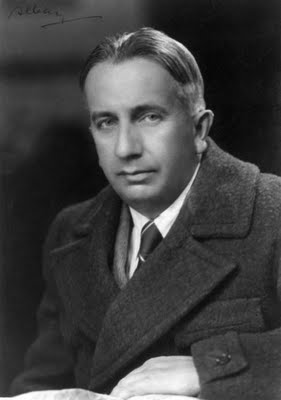 1883 – March 5, 1947) was a very interesting composer in his own right, even though his music is rarely played these days. He lived through one of the most turbulent periods in modern Italian history: the First World War, Mussolini’s fascist regime, and then the Second World War. Casella entered the Paris Conservatory in 1896 to study piano and composition, and while there he met "everybody": Debussy and Ravel, Stravinsky and Enescu, de Falla and Richard Strauss. He returned to Italy during the Great War and for some time taught at the Accademia di Santa Cecilia in Rome. He became involved in the new "futurist" music and even wrote a "futurist" piece, Pupazzetti (Puppets), here. But Casella’s interest in ahistorical Futurism was fleeting. In 1917 he, together with composers Ottorino Respighi and Gian Francesco Malipiero founded the National Music Society to perform new Italian music and also "resurrect our old forgotten music." In 1923 Casella, the poet and playwright Gabriele D'Annunzio and the same Malipiero organized Corporazione delle nuove musiche (CDNM), again with the goals of promoting modern Italian music as well as reviving the old.. CDNM brought to Italy a number of composers, including Béla Bartók and Paul Hindemith; CDNM’s concerts featured music of Schoenberg, Stravinsky, Poulenc, Kodály and other contemporaries. The 1920s was also the time of great interest in the European musical patrimony, the interest often tinged with nationalism. Like Respighi, who wrote The Birds and Ancient Airs and Dances, and Stravinsky (Pulcinella), Casella created pieces that echoed the music of his predecessors, in his case Scarlattiana (1926), an orchestral piece based on Domenico Scarlatti’s sonatas. It was only natural that Casella became involved in research and promotion of the music of Vivaldi. Ezra Pound and the violinist Olga Rudge, Pound’s companion, were also actively involved in reviving Vivaldi’s music. Pound at that time was a strong proponent of fascism; Casella too was a follower of Mussolini, especially his effort to create a national, state culture based on Italian cultural “self-sufficiency.” Casella of course was not the only one being seduced by fascism: most of the Italian cultural elite of the time, from D'Annunzio to painters Filippo Marinetti, Mario Sironi and even to some extent De Chirico, were either supporters of Mussolini or were strongly influenced by fascist ideals. Casella continued composing and teaching into the 1940s; his last composition was written in 1944, while Italy was a battlefield. It was called Missa Solemnis Pro Pace – a mass for peace. Among his students was the composer Nino Rota, who wrote Cantico in memoria di Alfredo Casella.
1883 – March 5, 1947) was a very interesting composer in his own right, even though his music is rarely played these days. He lived through one of the most turbulent periods in modern Italian history: the First World War, Mussolini’s fascist regime, and then the Second World War. Casella entered the Paris Conservatory in 1896 to study piano and composition, and while there he met "everybody": Debussy and Ravel, Stravinsky and Enescu, de Falla and Richard Strauss. He returned to Italy during the Great War and for some time taught at the Accademia di Santa Cecilia in Rome. He became involved in the new "futurist" music and even wrote a "futurist" piece, Pupazzetti (Puppets), here. But Casella’s interest in ahistorical Futurism was fleeting. In 1917 he, together with composers Ottorino Respighi and Gian Francesco Malipiero founded the National Music Society to perform new Italian music and also "resurrect our old forgotten music." In 1923 Casella, the poet and playwright Gabriele D'Annunzio and the same Malipiero organized Corporazione delle nuove musiche (CDNM), again with the goals of promoting modern Italian music as well as reviving the old.. CDNM brought to Italy a number of composers, including Béla Bartók and Paul Hindemith; CDNM’s concerts featured music of Schoenberg, Stravinsky, Poulenc, Kodály and other contemporaries. The 1920s was also the time of great interest in the European musical patrimony, the interest often tinged with nationalism. Like Respighi, who wrote The Birds and Ancient Airs and Dances, and Stravinsky (Pulcinella), Casella created pieces that echoed the music of his predecessors, in his case Scarlattiana (1926), an orchestral piece based on Domenico Scarlatti’s sonatas. It was only natural that Casella became involved in research and promotion of the music of Vivaldi. Ezra Pound and the violinist Olga Rudge, Pound’s companion, were also actively involved in reviving Vivaldi’s music. Pound at that time was a strong proponent of fascism; Casella too was a follower of Mussolini, especially his effort to create a national, state culture based on Italian cultural “self-sufficiency.” Casella of course was not the only one being seduced by fascism: most of the Italian cultural elite of the time, from D'Annunzio to painters Filippo Marinetti, Mario Sironi and even to some extent De Chirico, were either supporters of Mussolini or were strongly influenced by fascist ideals. Casella continued composing and teaching into the 1940s; his last composition was written in 1944, while Italy was a battlefield. It was called Missa Solemnis Pro Pace – a mass for peace. Among his students was the composer Nino Rota, who wrote Cantico in memoria di Alfredo Casella.
Italian pianist Igor Cognolato was born in Treviso. He studied at the Academy "Benedetto Marcello" in Venice, and at the Academy of Music in Hanover. Among his teachers were Aldo Ciccolini and Paul Badura-Skoda. Mr. Cognolato has extensively performer throughout Western Europe and North America. We’ll hear him play three parts of the Casella’s Sinfonia, Arioso e Toccata, op.59. Sinfonia can be heard here, Arioso – here, and Toccata – here.Permalink
March 5, 2012. Ravel and C. P. E. Bach. Maurice Ravel was born on the 7th of March, 1875 in Ciboure, a French Basque town on the border with Spain. This most French composer had a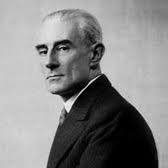 Swiss-born father (Igor Stravinsky, a good friend, called Ravel “the most perfect of Swiss watchmakers”) and a Basque mother who, prior to marrying Joseph Ravel, spent most of her life to Madrid. Around 1900 Ravel joined a group of French musicians, writers and artists, who called themselves Les Apaches (in French the word not only refers to the native American tribe but also means hooligans). Besides Ravel (and later Stravinsky), composers Florent Schmitt and Manuel de Falla also belonged to the band. Ricardo Viñes, the pianist who premiered many of Ravel’s compositions, was a member. Ravel even suggested a musical theme for the group, a rather wild and exotic entry to Borodin’s Second symphony. Ravel dedicated his piano suite Miroirs, written in 1905, to Les Apaches, and each of the five movements to a different person: Noctuelles to the poet Léon-Paul Fargue; Oiseaux tristes – to Ricardo Viñes, who premiered this work in 1906, Une barque sur l'océan – to the painter Paul Sordes (for many years the group met every Saturday at his home); Alborada del gracioso was dedicated to the music critic Michel-Dimitri Calvocoressi, a big fan of Russian music, especially that of Mussorgsky and an advisor to Sergei Dyaghilev; and La vallée des cloches – to the composer and pianist Maurice Delage. We’ll hear all five: Noctuelles is performed by the Italian pianist Igor Cognolato (here); Oiseaux tristes by the Chinese-born pianist Di Wu (here); Une barque sur l'océan – by Spencer Myer (here) Alborada del gracioso – by Milton Rubén Laufer (here), and La vallée des cloches – again by Igor Congnolato (here).
Swiss-born father (Igor Stravinsky, a good friend, called Ravel “the most perfect of Swiss watchmakers”) and a Basque mother who, prior to marrying Joseph Ravel, spent most of her life to Madrid. Around 1900 Ravel joined a group of French musicians, writers and artists, who called themselves Les Apaches (in French the word not only refers to the native American tribe but also means hooligans). Besides Ravel (and later Stravinsky), composers Florent Schmitt and Manuel de Falla also belonged to the band. Ricardo Viñes, the pianist who premiered many of Ravel’s compositions, was a member. Ravel even suggested a musical theme for the group, a rather wild and exotic entry to Borodin’s Second symphony. Ravel dedicated his piano suite Miroirs, written in 1905, to Les Apaches, and each of the five movements to a different person: Noctuelles to the poet Léon-Paul Fargue; Oiseaux tristes – to Ricardo Viñes, who premiered this work in 1906, Une barque sur l'océan – to the painter Paul Sordes (for many years the group met every Saturday at his home); Alborada del gracioso was dedicated to the music critic Michel-Dimitri Calvocoressi, a big fan of Russian music, especially that of Mussorgsky and an advisor to Sergei Dyaghilev; and La vallée des cloches – to the composer and pianist Maurice Delage. We’ll hear all five: Noctuelles is performed by the Italian pianist Igor Cognolato (here); Oiseaux tristes by the Chinese-born pianist Di Wu (here); Une barque sur l'océan – by Spencer Myer (here) Alborada del gracioso – by Milton Rubén Laufer (here), and La vallée des cloches – again by Igor Congnolato (here).
If we were asked to name a composer farthest removed musically from Ravel, Carl Philipp Emanuel Bach probably would make the list. But here he is, born the same week, on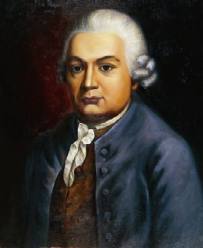 March 8, 1714. The fifth child of Johan Sebastian Bach became an important composer in his own right, one of the most significant composers of the era straddling Baroque and Classicism. His father was a great influence on him, as was his godfather, Georg Philipp Telemann, who in his time was at least as popular as J. S. Bach, if not more so. Emanuel Bach was born in Weimar, studied at the famous St. Thomas School at Leipzig (his father became a cantor there just a year before he entered the school, in 1723), and then for 30 years lived in Berlin. He started his service at the court of Crown Prince Frederick of Prussia in 1738. Two years later Frederick (who became known as Frederick the Great) succeeded his father as the king of Prussia, and Emanuel joined the royal orchestra. By then he was already famous as a harpsichordist and composer. The Berlin period was very prolific for Emanuel: he wrote a large number of keyboard sonatas and several orchestral pieces, among them a Magnificat and several symphonies. In 1768 Emanuel left the service of Frederick to become the court composer for his sister, Princess Anna Amalia in Hamburg – a post previously occupied by his godfather, Georg Philipp Telemann. That was the time when Emanuel wrote most of his choral pieces, including the oratorio Die Israeliten in der Wüste (The Israelites in the Desert), cantatas, and different settings of the Passion. He died on December 14, 1788. Mozart, who regarded him very highly and called himself and other contemporary composers of the time "children of Emanuel Bach," was by then at the pinnacle of his career. We’ll hear Rondo in F Major, Wq. 57 performed by the young Israeli pianist Einav Yarden (here) and Flute Sonata in G Major (here), performed by the flutists Martha Councell with Richard Steinbach on the piano.Permalink
March 8, 1714. The fifth child of Johan Sebastian Bach became an important composer in his own right, one of the most significant composers of the era straddling Baroque and Classicism. His father was a great influence on him, as was his godfather, Georg Philipp Telemann, who in his time was at least as popular as J. S. Bach, if not more so. Emanuel Bach was born in Weimar, studied at the famous St. Thomas School at Leipzig (his father became a cantor there just a year before he entered the school, in 1723), and then for 30 years lived in Berlin. He started his service at the court of Crown Prince Frederick of Prussia in 1738. Two years later Frederick (who became known as Frederick the Great) succeeded his father as the king of Prussia, and Emanuel joined the royal orchestra. By then he was already famous as a harpsichordist and composer. The Berlin period was very prolific for Emanuel: he wrote a large number of keyboard sonatas and several orchestral pieces, among them a Magnificat and several symphonies. In 1768 Emanuel left the service of Frederick to become the court composer for his sister, Princess Anna Amalia in Hamburg – a post previously occupied by his godfather, Georg Philipp Telemann. That was the time when Emanuel wrote most of his choral pieces, including the oratorio Die Israeliten in der Wüste (The Israelites in the Desert), cantatas, and different settings of the Passion. He died on December 14, 1788. Mozart, who regarded him very highly and called himself and other contemporary composers of the time "children of Emanuel Bach," was by then at the pinnacle of his career. We’ll hear Rondo in F Major, Wq. 57 performed by the young Israeli pianist Einav Yarden (here) and Flute Sonata in G Major (here), performed by the flutists Martha Councell with Richard Steinbach on the piano.Permalink
February 27, 2012. Rossini, Chopin, Vivaldi. What a week - anniversaries of not one but three great composers. And because it’s a leap year, we can celebrate Gioachino Rossini on his exact birthday, February 29th. He was born in 1792 in Pesaro, a city on the Adriatic coast. Both of his parents were musicians, and his father gave him his first music lessons. When the family moved to Bologna, Gioachino took lessons from one Giuseppe Prinetti, a cembalo player who also distilled and sold brandy on a side. Rossini’s earliest surviving compositions are the six Sonate a quattro, scored for two violins, cello and double bass; he was twelve at the time. He composed his first opera, Demetrio e Polibio, just one year later. By the age of 21 he was famous throughout Italy, having written a very successful opera Tancredi. He was given a very lucrative contract as the music director of two theaters in Naples, the famous Teatro di San Carlo and Teatro del Fondo (as part of the agreement he was to write an opera a year for each theater). In 1816, when he was 24, he created what was to become his most successful opera, Il barbiere di Siviglia. It was written in just two or three weeks (later in his life Rossini boasted that he wrote it in 12 days). The premiere was a failure, as it was sabotaged by the whistling and booing supporters of Rossini’s rival, the composer Giovanni Paisiello, but the subsequent performances went triumphantly well. Rossini retired from composing at the age of 37. He moved from Bologna to Florence and then Paris. He became a gourmand, an excellent chef and a famous host. Later in life he returned to composition, writing a number of pieces he called Sins of Old Age. Rossini died in 1868. He was reburied in Florence’s Basilica di Santa Croce several years later. We’ll hear two of his pieces: one, the overture to the opera La Gazza Ladra, performed by The Texas Festival Orchestra, Michael Guttler conducting (here); another – the famous song La Danza (Tarantella), from Serate Musicali. It’s sung here by the Canadian soprano Lucia Cesaroni. Brent Funderburk is on the piano.
on his exact birthday, February 29th. He was born in 1792 in Pesaro, a city on the Adriatic coast. Both of his parents were musicians, and his father gave him his first music lessons. When the family moved to Bologna, Gioachino took lessons from one Giuseppe Prinetti, a cembalo player who also distilled and sold brandy on a side. Rossini’s earliest surviving compositions are the six Sonate a quattro, scored for two violins, cello and double bass; he was twelve at the time. He composed his first opera, Demetrio e Polibio, just one year later. By the age of 21 he was famous throughout Italy, having written a very successful opera Tancredi. He was given a very lucrative contract as the music director of two theaters in Naples, the famous Teatro di San Carlo and Teatro del Fondo (as part of the agreement he was to write an opera a year for each theater). In 1816, when he was 24, he created what was to become his most successful opera, Il barbiere di Siviglia. It was written in just two or three weeks (later in his life Rossini boasted that he wrote it in 12 days). The premiere was a failure, as it was sabotaged by the whistling and booing supporters of Rossini’s rival, the composer Giovanni Paisiello, but the subsequent performances went triumphantly well. Rossini retired from composing at the age of 37. He moved from Bologna to Florence and then Paris. He became a gourmand, an excellent chef and a famous host. Later in life he returned to composition, writing a number of pieces he called Sins of Old Age. Rossini died in 1868. He was reburied in Florence’s Basilica di Santa Croce several years later. We’ll hear two of his pieces: one, the overture to the opera La Gazza Ladra, performed by The Texas Festival Orchestra, Michael Guttler conducting (here); another – the famous song La Danza (Tarantella), from Serate Musicali. It’s sung here by the Canadian soprano Lucia Cesaroni. Brent Funderburk is on the piano.
Frédéric Chopin was born 202 years ago, either on February 22 or March 1 of 1810 in Żelazowa Wola, Poland. Here are several Polonaises: Op. 26 no 1; Op 40 no 1; Op 40 no 2; Op 26 no 2; Op 44; and Op 53. They are performed by the extraordinary Russian piano virtuoso Lazar Berman (2/261930 – 2/6/2005). This live recording was provided to us by Istituto Europeo di Musica.
And finally, Antonio Vivaldi, il Prete Rosso, was born on March 4, 1678 in the Most Serene Republic of Venice. Vivaldi was without a doubt one of the greatest Baroque composers and influenced many composers, Johann Sebastian Bach among them. Famous during his life, he lost popularity soon after his death (it was waning even during the last years of his life, while he was living in Vienna). As hard as it is to imagine these days, with music from the Four Seasons playing in every shop, the revival of Vivaldi’s music happened only in the 20th century. Fritz Kreisler’s concerto in style of Vivaldi spurred the interest; later on the Italian composer Alfredo Casella published many of previously unknown manuscripts. General interest in Baroque music, which started in the late 1950s, cemented Vivaldi’s fame. Here’s Harpsichord Concerto in A Major. It’s performed by David Schrader and Baroque Band.
composers, Johann Sebastian Bach among them. Famous during his life, he lost popularity soon after his death (it was waning even during the last years of his life, while he was living in Vienna). As hard as it is to imagine these days, with music from the Four Seasons playing in every shop, the revival of Vivaldi’s music happened only in the 20th century. Fritz Kreisler’s concerto in style of Vivaldi spurred the interest; later on the Italian composer Alfredo Casella published many of previously unknown manuscripts. General interest in Baroque music, which started in the late 1950s, cemented Vivaldi’s fame. Here’s Harpsichord Concerto in A Major. It’s performed by David Schrader and Baroque Band.
PermalinkFebruary 20, 2012. George Frideric Handel and Carl Czerny. We celebrate Handel’s birthday (he was born on February 23, 1685 in Halle) every year. It would been odd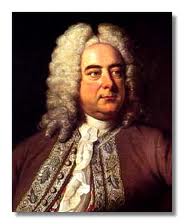 not to: he’s one of the pillars of classical music. This time we’ll be brief: here is his Concerto Grosso in a minor, op. 6, no. 4. It is performed by Baroque Band, a Chicago-based ensemble. David Schrader, who among other things is the ensemble’s harpsichordist writes, "Johann Sebastian Bach and George Frideric Handel both made use of a synthesis of the French and the Italian styles – in fact, this synthesis is a characteristic of the Germans of the baroque era. Added to the native German musical language's innate richness of harmony and counterpoint, it literally defines the styles of these two giants of the late baroque. While Handel used French dance types in his music for the theatre, in this concerto we hear mostly the legacy of Corelli, whom Handel had met and worked with when in Rome in the early years of the eighteenth century. The work was finished on the eighth of October of 1739 and was printed by subscription – the subscribers included members of the royal family and many prominent members of the English nobility. The concertos of op. 6 are considered to be among the finest of eighteenth-century ensemble music, on a par with the Brandenburg Concertos of Bach. Like the Brandenburgs, the concertos of op. 6 are so diverse in plan as to resist any pattern except that of extremely high quality."
not to: he’s one of the pillars of classical music. This time we’ll be brief: here is his Concerto Grosso in a minor, op. 6, no. 4. It is performed by Baroque Band, a Chicago-based ensemble. David Schrader, who among other things is the ensemble’s harpsichordist writes, "Johann Sebastian Bach and George Frideric Handel both made use of a synthesis of the French and the Italian styles – in fact, this synthesis is a characteristic of the Germans of the baroque era. Added to the native German musical language's innate richness of harmony and counterpoint, it literally defines the styles of these two giants of the late baroque. While Handel used French dance types in his music for the theatre, in this concerto we hear mostly the legacy of Corelli, whom Handel had met and worked with when in Rome in the early years of the eighteenth century. The work was finished on the eighth of October of 1739 and was printed by subscription – the subscribers included members of the royal family and many prominent members of the English nobility. The concertos of op. 6 are considered to be among the finest of eighteenth-century ensemble music, on a par with the Brandenburg Concertos of Bach. Like the Brandenburgs, the concertos of op. 6 are so diverse in plan as to resist any pattern except that of extremely high quality."
We’d also like to mention a musician of much more modest talent – Carl Czerny. He was born on February 21, 1791. Probably not a single pianist, whether amateur or professional, has managed to avoid playing some of Czerny’s etudes. This is his legacy, even though he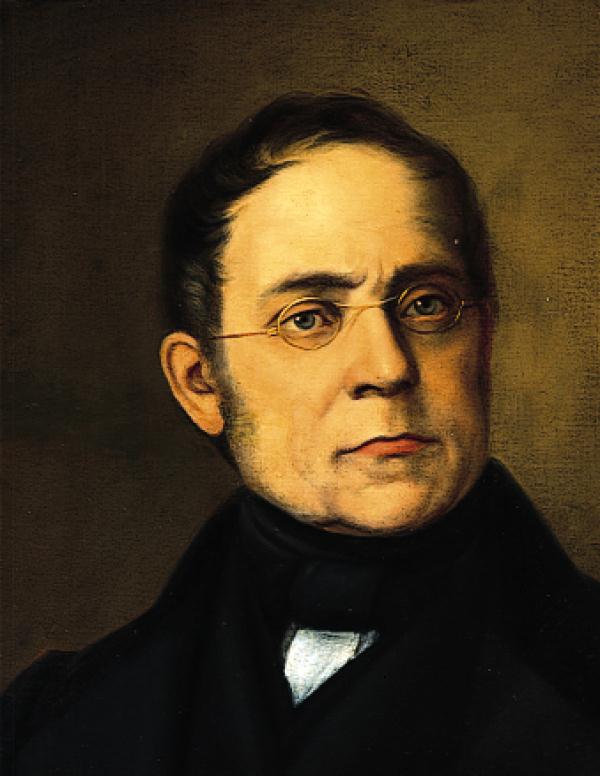 wrote a huge amount of other music, including masses, symphonies, sonatas, and quartets. Practically none of it can be heard these days. Czerny had great teachers: Clementi, Hummel, Salieri and Beethoven and became a famous piano teacher himself. His most celebrated pupil was Franz Liszt, as well as Liszt’s rival Sigismond Thalberg, Theodor Leschetizky, and many others. Through their own pupils they continued this celebrated musical linage till this day. Here’s Etude no.16 in G major from Czerny’s Op. 299, the School of Velocity. It’s performed by Canadian pianist David-Michael Dunbar.
wrote a huge amount of other music, including masses, symphonies, sonatas, and quartets. Practically none of it can be heard these days. Czerny had great teachers: Clementi, Hummel, Salieri and Beethoven and became a famous piano teacher himself. His most celebrated pupil was Franz Liszt, as well as Liszt’s rival Sigismond Thalberg, Theodor Leschetizky, and many others. Through their own pupils they continued this celebrated musical linage till this day. Here’s Etude no.16 in G major from Czerny’s Op. 299, the School of Velocity. It’s performed by Canadian pianist David-Michael Dunbar.
PermalinkFebruary 13, 2012. Corelli and Boccherini. Arcangelo Corelli, the Italian Baroque composer and violinist, was born on February 17, 1653. During his lifetime Corelli was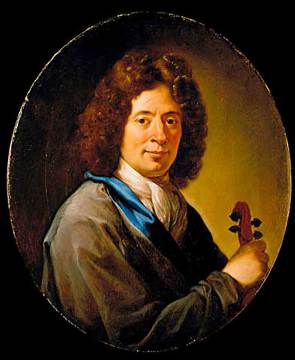 more famous as a violinist than composer. He had many pupils, among them Geminiani and Locatelli, who became famous themselves as composers and violinists. Corelli’s music for violin, while very melodic, was quite un-virtuosic and used only a limited range of the instrument. It was widely circulated and favored as suitable pieces for students. In a famous episode from 1708, it is said that Corelli refused to play a high altissimo A in a passage from the overture to Handel's oratorio The Triumph of Time and Truth. When Handel, at the time just 23 and 32 years younger than Corelli, played the note, Corelli took offence.
more famous as a violinist than composer. He had many pupils, among them Geminiani and Locatelli, who became famous themselves as composers and violinists. Corelli’s music for violin, while very melodic, was quite un-virtuosic and used only a limited range of the instrument. It was widely circulated and favored as suitable pieces for students. In a famous episode from 1708, it is said that Corelli refused to play a high altissimo A in a passage from the overture to Handel's oratorio The Triumph of Time and Truth. When Handel, at the time just 23 and 32 years younger than Corelli, played the note, Corelli took offence.
We’ll hear two pieces by the Corelli. First, Sonata in C Major, Op. 5, No. 3 performed by Rachel Barton Pine, violin, and David Schrader, harpsichord. Ms. Barton Pine plays a Nicola Gagliano violin from 1770, in original, unaltered condition. You can listen to it here. A very different recording was made by the Russian violinist Albert Markov in 1970. It is La Folia, arranged by Fritz Kreisler. Beautiful sound, rich and romantic, today may seem a bit dated. Still, it’s a pleasure to listen to (here). Dmitry Cogan is on the piano. We should note that La Folia (or folly) is one of the oldest recorded tunes in the history of European music. The first classical arrangement of it was written by Jean-Baptiste Lully in 1672. In addition to Corelli, the theme was used by Marin Marais, Alessandro Scarlatti, Antonio Vivaldi and many other composers (the site folias.nl is dedicated just to this music).
Luigi Boccherini, an Italian Classical composer, was born on February 19, 1743 in Lucca, Italy. Boccherini moved to Madrid around 1769 to become a music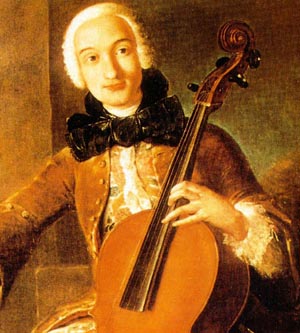 teacher to Infante Luis Antonio, younger brother of King Charles III. He enjoyed great popularity till, as the story goes, one day the King expressed his disapproval for a passage in a new trio, and ordered Boccherini to change it. Outraged, Boccherini doubled the passage instead, and was immediately dismissed. He stayed in Spain and eventually found other patrons, but his life ended in hardship in 1805.
teacher to Infante Luis Antonio, younger brother of King Charles III. He enjoyed great popularity till, as the story goes, one day the King expressed his disapproval for a passage in a new trio, and ordered Boccherini to change it. Outraged, Boccherini doubled the passage instead, and was immediately dismissed. He stayed in Spain and eventually found other patrons, but his life ended in hardship in 1805.
Boccherini was a virtuoso cellist – it is said that he could play a violin repertoire on the cello in the original pitch. Boccherini was a great admirer of Haydn (he used to be dismissively called "Haydn’s wife" in the 19th century, when his music was all but forgotten) and wrote a number of trios, quartets and quintets following Haydn’s models. Permalink